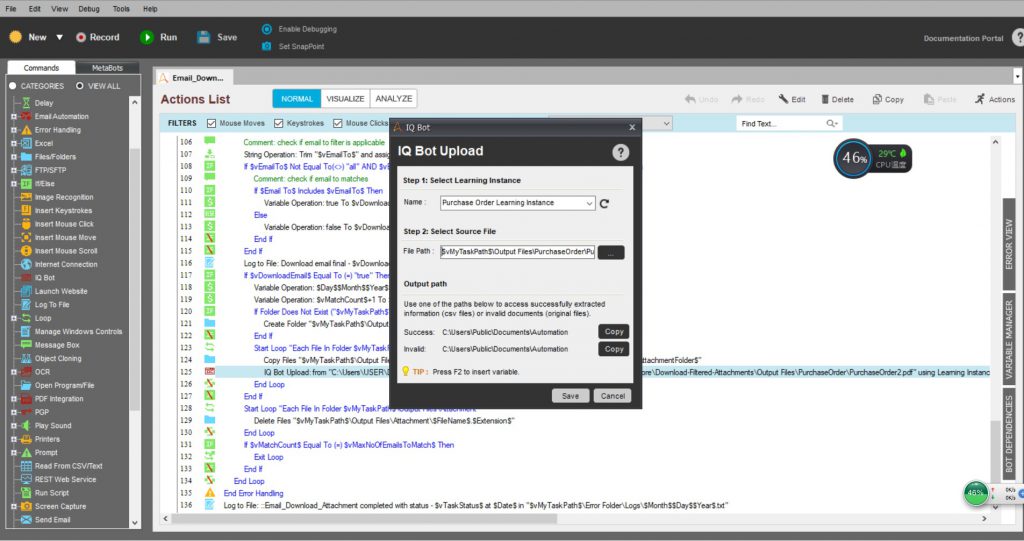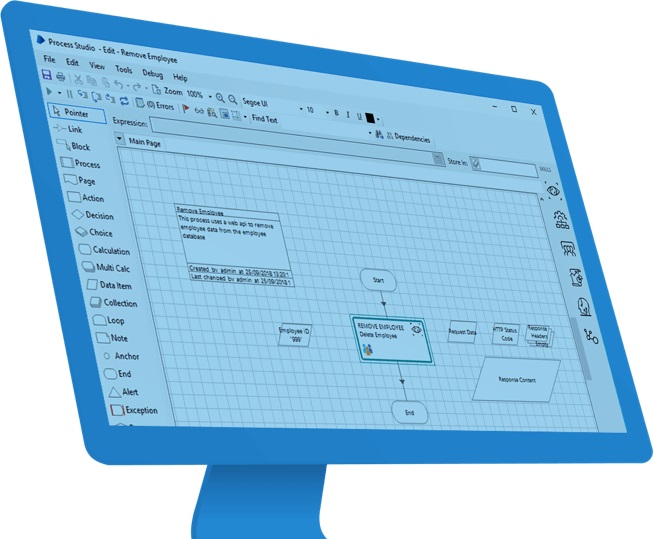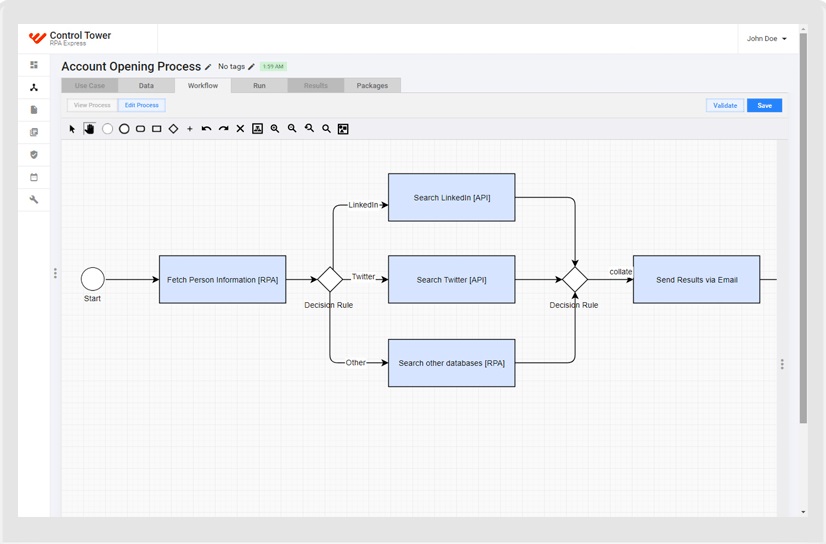4 POPULAR ROBOTIC PROCESS AUTOMATION (RPA) TOOLS
November 26, 2019
Build a Robot to automate business process.
RPA is one of the biggest buzzwords in the world of technology right now as It offers a massive amount of benefits not only to the company but also to the individual as well.
In this article, we will understand what RPA is, its benefits, how it is different from traditional test automation and some of the popular RPA tools.
What is Robotic Process Automation (RPA)?
RPA is a business process automation technology that allows a computer program or robot to replicate otherwise the manual process in an automated, reliable, and repeatable manner.
- Robotic (R) -software that mimics human action like click, keystrokes, navigation, etc.
- Process (P)– Sequence of steps taken to achieve the desired result.
- Automation (A)-Performing the sequences of steps in a process without any human intervention.
Why do we need to use RPA?
- Continuous cost reduction
- Standardization and control on the overall process
- Increases productivity and speed of processing
- Derive predictability and higher quality
- Minimizing manual error and fault.
RPA benefits
- Reduced turnaround time by removing human intervention in a repetitive task
- Improved accuracy and predictability.
- Enhanced overall customer satisfaction
- Increased operational efficiency
- Easy to use and maintain
- Easy to scale depending on the need.
- Better Return on Investment (ROI)
- Enhanced customer experience.
Where RPA can be useful
- Payroll and order processing
- Shipment scheduling and tracking
- Excel comparison
- Status reports
- Fraud case investigation
- Support & helpdesk
- Banking processing
Now the big question that probably comes to everyone’s mind is how Robotic Process Automation is different from traditional testing? Why do we need a dedicated tool for performing each task?
Test Automation VS RPA
In principle, both test automation and RPA share one common goal: automating manual activities.
But conceptually, these two are similar processes both demand fast releases, time and cost efficiency, correctness, quality assurance, reduced human intervention and, of course, automation.

However, there is plenty of difference between them.
- Traditional automation focuses more on automating the testing process, e.g. writing code to perform a particular task of manual testing. Whereas in RPA Key goal is to build the process of automating the business process in several industries like Pharma, Telcom, Banking, ERP, etc. using the software robots to accomplish a specific task.
- Traditional automation testing is mainly focused on programming and is based on API and other integration methods for testing different systems altogether. RPA, on the other hand, simulates the actions of a user at the user interface level.
- In traditional automation, the developer should have a good understanding of the domain and system. Whereas in RPA, since the robot can have the user’s actions, and the robot can follow precisely the steps, we do not have to worry about the complexity of the various system and sub-systems.
- The target audience of RPA is operation users or end SME with technological knowledge that can teach robots what to do, whereas in traditional automation requires a significant amount of IT Participation from all the respective stack holders.
If you are interested in learning more about RPA, then I would recommend taking this Udemy course.
Now let’s check out some of the best RPA tools available in the market.
1) UiPath
Uipath was founded in 2005, and it is the most popular RPA automation tool in the current market.
The great thing about Uipath is that it provides a community edition to people who want to learn, practice, and implement RPA.

Key features:
- Multiple hosting options – can be hosted across cloud, virtual machines, and terminal services.
- Application compatibility – offer a wide variety of applications to work, including desktop, SAP, Mainframe, and web application.
- Support for security and governance
- Rule-based exception handling
- Support for rapid application development (RAD).
- Easy to scale and maintain
2) Automation Anywhere
Automation Anywhere offers powerful and user-friendly RPA capabilities to automate any type of end to end complex task and business processes.
It is a combination of RPA, cognitive automation, and workforce analytics.

Highlights
- Easy to use and manage and no programming knowledge is required
- Ease of integration with different platforms
- Support for a distributed architecture
- Simple and easy to follow GUI
You can get it started with 30 days of free trial to explore the software.
3) Blue Prism
Meet the RPA tools leader.
Blue prism is capable of providing the virtual workforce powered by robots. It helps an enterprise to automate business process operations in an agile and cost-effective manner.

Highlights
- It provides easy to use visual designer which workflows can be automated by only doing drag and drop.
- Simple, secure, robust
- Based on java so naturally, it supports all object-oriented programming principles
- Support for all major cloud platform, including Microsoft Azure and Amazon AWS.
- Easy to scale based on the requirements.
- Support for data analytics.
Blue Prism is an enterprise-ready solution.
4) WorkFusion
WorkFusion was founded in 2010, and It is the packaged automation solution for all complex tasks combining into one platform. All the core capabilities needed to digitize complex business processes like business process management (BPM), robotic process automation (RPA), workforce orchestration, and machine learning-powered cognitive automation.

Highlights
- Image-based recording for no-code automation
- Easy to use with drag and drop library
- Monitor the progress and performance of your bots in one place with a centralized control tower
- Built-in OCR to digitize data
- Simple and easy to build and customize using java-based scripts.
Conclusion
I hope you get a fair amount of idea about RPA and its tools available in the market. Choose the one fits your budget and requirement. If you are preparing for an interview, then you may check out this UiPath and Blue Prism top questions answered.

 English | EN
English | EN 